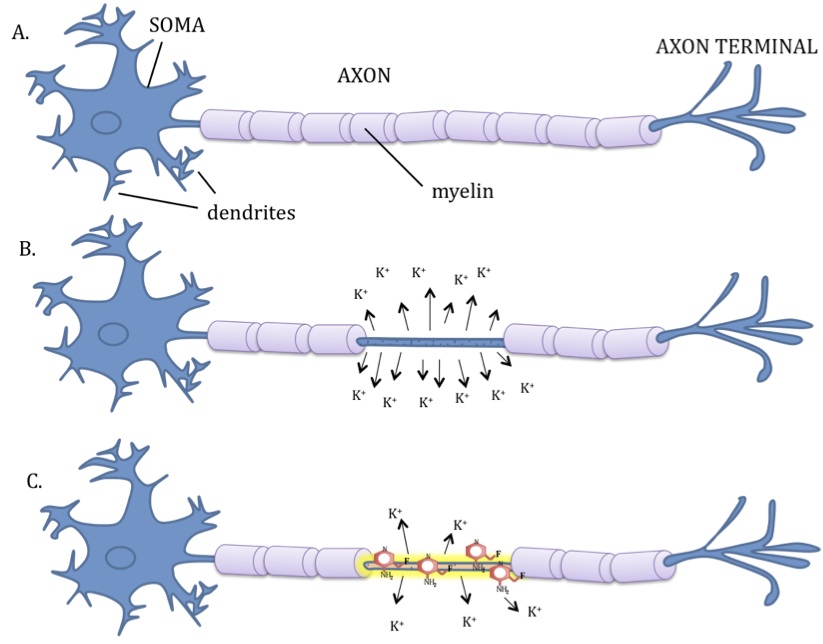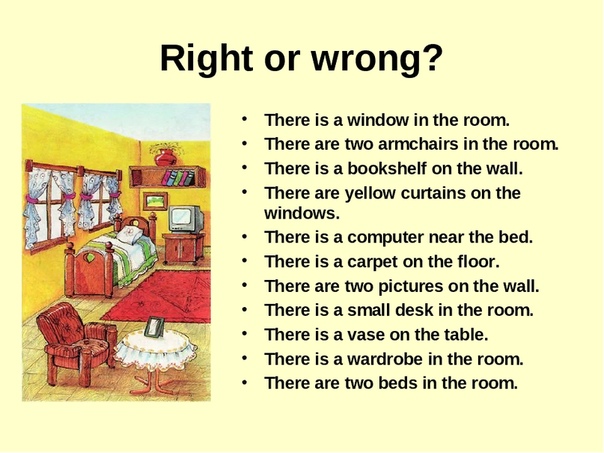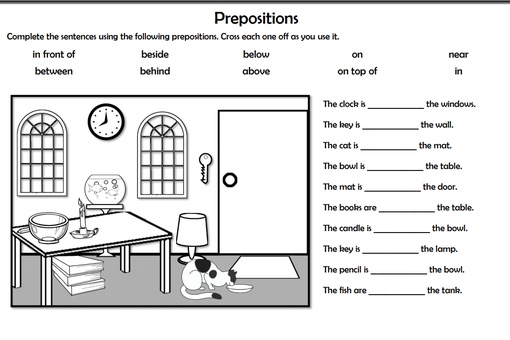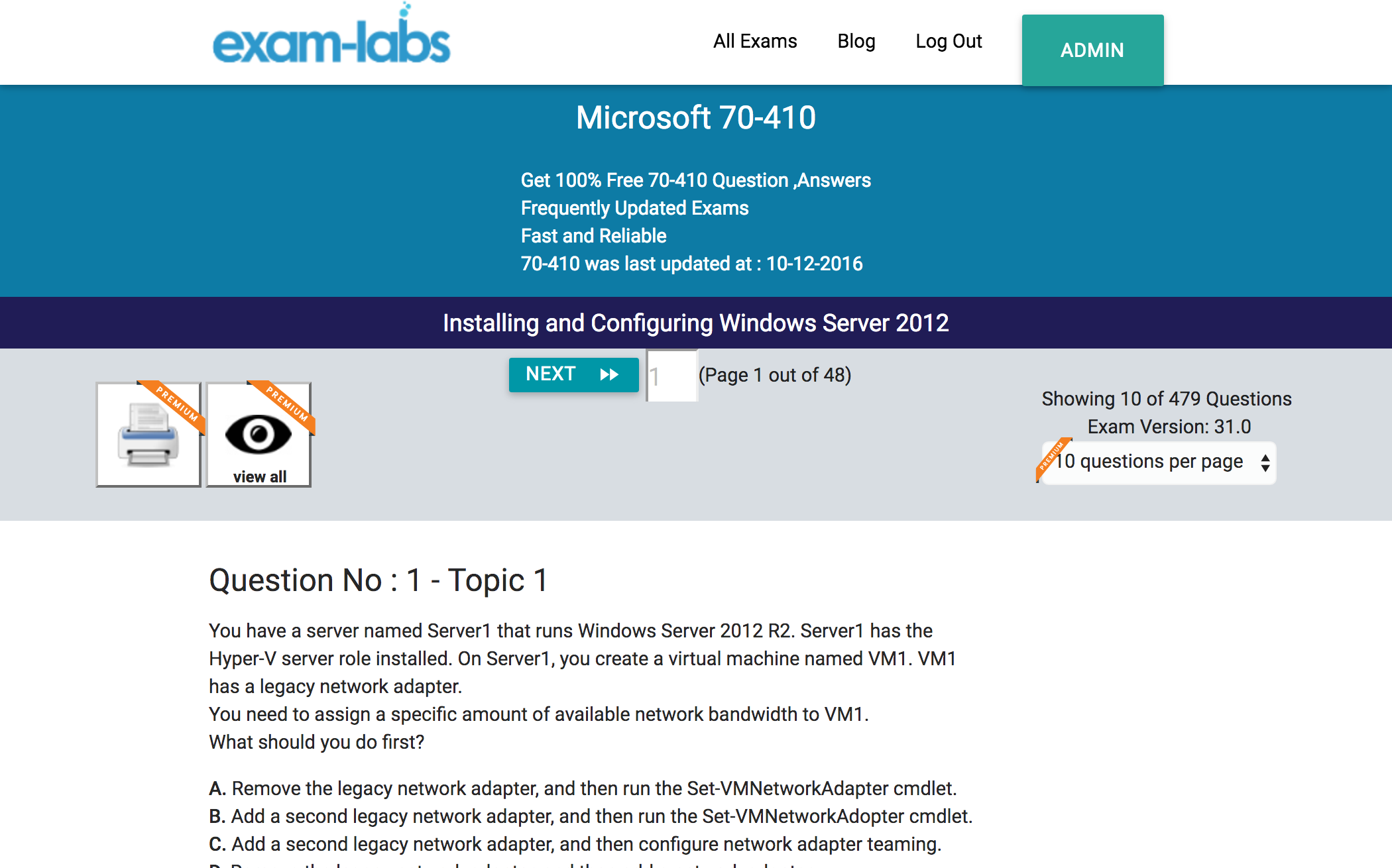Is there a test for ms. Unraveling Multiple Sclerosis: A Comprehensive Guide to Diagnosis and Treatment
How do doctors test for multiple sclerosis? What are the key signs and symptoms? Discover the latest McDonald criteria for MS diagnosis and the role of specialists in managing this complex condition.
Deciphering Multiple Sclerosis: The Diagnostic Process
Diagnosing multiple sclerosis (MS) can be a complex and challenging task for healthcare providers. Unlike many other medical conditions, there is no single definitive test that can conclusively prove the presence of MS. Instead, doctors must rely on a combination of clinical signs, symptoms, and various diagnostic tools to arrive at a diagnosis.
Recognizing the Symptoms of Multiple Sclerosis
The initial step in the diagnostic process is identifying the characteristic symptoms of MS. These may include numbness or tingling in the skin, particularly in the hands or feet, unusual weakness in the arms, legs, or fingers, slurred speech, stumbling or difficulty walking, double vision, loss of color perception, and eye pain that worsens with movement. If these symptoms persist for more than a couple of days, even if they resolve on their own, it is crucial to seek the expertise of a neurologist who specializes in MS.

Ruling Out Other Conditions
When a patient presents with symptoms suggestive of MS, the first priority for healthcare providers is to rule out other potential causes, such as stroke, tumor, or pressure on the spinal cord. This process may involve a series of tests, including magnetic resonance imaging (MRI) scans, lumbar punctures, and blood tests, to gather comprehensive information about the patient’s condition.
The Role of MRI in Diagnosing Multiple Sclerosis
MRI scans play a crucial role in the diagnosis of MS, as they allow healthcare providers to visualize changes in the brain and spinal cord that are characteristic of the disease. These changes, known as lesions, can provide valuable insights into the extent and progression of the disease. However, it is important to note that the presence of lesions alone is not sufficient for a definitive MS diagnosis, as other conditions can also cause similar findings on MRI.
The McDonald Criteria: A Standardized Approach to Diagnosis
The McDonald criteria, named after neurologist Ian McDonald, are a set of guidelines developed to help healthcare providers diagnose MS more accurately and efficiently. These criteria require evidence of damage in more than one distinct part of the nervous system, as well as the presence of symptoms typical of MS that have lasted at least 24 hours, in the absence of fever or infection.

The Role of Specialists in Managing Multiple Sclerosis
Once a diagnosis of MS has been made, it is essential for patients to work closely with a team of healthcare specialists, including neurologists, who are experienced in the management of this complex condition. These specialists can help develop personalized treatment plans, monitor the progression of the disease, and provide support and guidance to patients and their families.
How do doctors determine if a patient has multiple sclerosis?
Doctors use a combination of clinical signs, symptoms, and various diagnostic tests to determine if a patient has multiple sclerosis. This process typically includes a thorough medical history, physical examination, magnetic resonance imaging (MRI) scans, lumbar punctures, and blood tests. The goal is to rule out other potential causes of the patient’s symptoms and to gather evidence of damage to the nervous system that is characteristic of MS.
What are the key diagnostic criteria for multiple sclerosis?
The McDonald criteria, named after neurologist Ian McDonald, are the primary diagnostic guidelines used to diagnose multiple sclerosis. These criteria require evidence of damage in more than one distinct part of the nervous system, as well as the presence of symptoms typical of MS that have lasted at least 24 hours, in the absence of fever or infection.

How do MRI scans help in the diagnosis of multiple sclerosis?
MRI scans are a crucial tool in the diagnosis of multiple sclerosis, as they allow healthcare providers to visualize changes in the brain and spinal cord that are characteristic of the disease. These changes, known as lesions, can provide valuable insights into the extent and progression of the disease. However, the presence of lesions alone is not sufficient for a definitive MS diagnosis, as other conditions can also cause similar findings on MRI.
What is the role of specialists in managing multiple sclerosis?
Once a diagnosis of multiple sclerosis has been made, it is essential for patients to work closely with a team of healthcare specialists, including neurologists, who are experienced in the management of this complex condition. These specialists can help develop personalized treatment plans, monitor the progression of the disease, and provide support and guidance to patients and their families.
What are some of the common symptoms of multiple sclerosis?
The common symptoms of multiple sclerosis can include numbness or tingling in the skin, particularly in the hands or feet, unusual weakness in the arms, legs, or fingers, slurred speech, stumbling or difficulty walking, double vision, loss of color perception, and eye pain that worsens with movement.

How do doctors rule out other conditions when diagnosing multiple sclerosis?
When a patient presents with symptoms suggestive of multiple sclerosis, healthcare providers must first rule out other potential causes, such as stroke, tumor, or pressure on the spinal cord. This process may involve a series of tests, including MRI scans, lumbar punctures, and blood tests, to gather comprehensive information about the patient’s condition and eliminate alternative diagnoses.
How Doctors Test for MS
Written by WebMD Editorial Contributors, Alexandra Benisek
Medically Reviewed by Jennifer Robinson, MD on January 24, 2023
- What Do Doctors Look For?
- Multiple Sclerosis Tests
- McDonald Criteria for MS
- After a Multiple Sclerosis Diagnosis
- MS Specialists
It can be a challenge for doctors to diagnose multiple sclerosis (MS). There’s no single test that can prove you have it. And many conditions have symptoms that seem like those of MS.
A neurologist – a doctor who specializes in treating the disease – should be able to help. They’ll ask how you’re feeling and help you figure out if your symptoms mean you have MS or another problem.
MS can take some time and a number of tests to diagnose. It starts when you or your doctor notices certain signs or symptoms that could be MS. These might include:
- Numbness or tingling in the skin (typically, hands or feet)
- Unusual weakness in arms, legs, or fingers
- Slurred speech
- Stumbling or trouble walking
- Double vision or loss of color
- Flashing lights that others can’t see
- Eye pain that gets worse with movement
When you first notice these symptoms, especially if they are serious, your doctor will rule out other possible causes like stroke, tumor, or pressure on the spinal cord. If the symptoms last more than a couple of days, even if they go away on their own, it may be time to see a neurologist who specializes in MS to speed up diagnosis and start treatment.
If the symptoms last more than a couple of days, even if they go away on their own, it may be time to see a neurologist who specializes in MS to speed up diagnosis and start treatment.
If your doctors suspect MS, they will look for further symptoms and signs that suggest MS. To make a final MS diagnosis, they will use several tools to try and do three things:
- Rule out any other conditions that could cause your symptoms
- Find damage to at least two spots on your brain
- Prove the damage happened at different points in time
These tests will help your doctor know if your brain and spinal cord are working as they should. These include:
MRI: This imaging test lets the doctor take a closer look at your brain. They can see changes caused by multiple sclerosis, like signs of inflammation in the deep parts of your brain or spinal cord.
Older people or those with high blood pressure and diabetes also can have the same kinds of spots on a brain MRI. So the doctor will consider other info, including your symptoms, along with the scan results or the enhancement of lesions before they make a diagnosis.
So the doctor will consider other info, including your symptoms, along with the scan results or the enhancement of lesions before they make a diagnosis.
Also, an MRI result that says things are normal doesn’t rule out MS. You could be one of a small number of people who have lesions in places the scan can’t show.
Learn more about using MRI to diagnose MS.
Lumbar puncture: This test, which you may also hear called a spinal tap, checks the fluid that runs through your spinal column. Doctors use it to look for high levels of proteins and other substances that are signs of the disease. It can help diagnose MS, but it, too, isn’t absolute proof.
Know what to expect with a spinal tap to diagnose MS.
Blood tests: They can’t diagnose MS, but the doctor will use them to look for substances in your blood that point to it. Most importantly, they can help your doctor rule out conditions that look like MS.
Get more information about other types of demyelinating disorders that look like MS.
Eye exam: An eye exam could reveal problems that MS sometimes causes. Your doctor will test how well you can see detail far away, your field of vision, eye muscle strength, and pressure inside the eyeball, among other things. Possible MS-related conditions might include:
- Optic neuritis: Damage to the optic nerve that often causes pain as well as blind spots surrounded by areas of normal vision
- Nystagmus: Eyes move rhythmically back and forth or up and down without conscious effort. May be due to nerve damage, especially in the brainstem or cerebellum.
- Diplopia: Double vision that happens due to damage to the nerve pathways that control the eyes. It can be an early symptom of MS.
Evoked potential test: If you have unusual symptoms, your doctor may do this to check your nerve function. This test uses electrodes to measure electrical activity in areas of your brain triggered by touch, sound, or light. This might happen while you look at a pattern on a screen, listen to clicking sounds, or get electrical pulses on your body.
The McDonald criteria, named for neurologist Ian McDonald, are measures aimed at helping doctors diagnose MS more accurately and quickly. First published in 2001, they’ve been revised several times, according to the latest research.
To diagnose you with MS under these criteria, doctors need evidence that you have damage in more than one distinct part of your nervous system. You also need to have had symptoms typical of MS. These symptoms must have lasted at least 24 hours (not necessarily continuously), at a time when you had no fever or infection.
The evidence must show that this damage happened over time and corresponds to nerves involved in an MS attack. That could mean you’ve had two separate MS attacks at least 30 days apart. But you could be diagnosed after just one episode of symptoms, if an MRI shows you have MS lesions that occurred earlier in a certain area of your brain.
The McDonald criteria take into account:
- Your symptoms
- How many attacks you’ve had
- Results of imaging tests like MRI
- Findings of optical coherence tomography, which examines your retinas
- Results of other tests, like those done on your spinal fluid after a lumbar puncture
Other possible causes of your condition also need to have been ruled out.
It may take a long time to figure out that you have MS. If you’ve been waiting years or months, the news might be a relief. Or it could be a huge shock. Either way, you’ll have concerns about what the disease means for your life and your family. That’s completely understandable.
Talk with others – your friends, your doctor, a support group, or a counselor – about your feelings. Your health care team can help you decide the best ways to treat your disease and live with it day to day. MS affects everyone differently, so what works for one person with the condition may not be what’s best for you.
Your MS specialist will most likely be a neurologist. Neurologists are either Doctors of Medicine (MDs) or Doctors of Osteopathic Medicine (DOs) who have completed residencies in neurology. They’ll have a broad understanding of diseases that involve your nervous system (such as MS).
Other members of your care team may be MDs or DOs who are trained in family medicine, internal medicine, or other specialties such as physical medicine and rehabilitation.
Nurse practitioners and physician assistants may also be involved in helping implement your treatment plan and helping you to live your healthiest life.
In addition to your general doctor, your MS specialist can give you extra care for your condition. They can:
- Personalize your MS care to your specific wants and needs.
- Notify you when there are new medications or treatments for MS.
- Alert you if there is a new clinical trial for MS.
- Care for your emotional health and rehabilitation.
- Consider your family’s well-being during your treatment.
- Help you return to a desirable level of function.
- Help you meet your fitness goals.
Top Picks
How Doctors Test for MS
Written by WebMD Editorial Contributors, Alexandra Benisek
Medically Reviewed by Jennifer Robinson, MD on January 24, 2023
- What Do Doctors Look For?
- Multiple Sclerosis Tests
- McDonald Criteria for MS
- After a Multiple Sclerosis Diagnosis
- MS Specialists
It can be a challenge for doctors to diagnose multiple sclerosis (MS). There’s no single test that can prove you have it. And many conditions have symptoms that seem like those of MS.
There’s no single test that can prove you have it. And many conditions have symptoms that seem like those of MS.
A neurologist – a doctor who specializes in treating the disease – should be able to help. They’ll ask how you’re feeling and help you figure out if your symptoms mean you have MS or another problem.
MS can take some time and a number of tests to diagnose. It starts when you or your doctor notices certain signs or symptoms that could be MS. These might include:
- Numbness or tingling in the skin (typically, hands or feet)
- Unusual weakness in arms, legs, or fingers
- Slurred speech
- Stumbling or trouble walking
- Double vision or loss of color
- Flashing lights that others can’t see
- Eye pain that gets worse with movement
When you first notice these symptoms, especially if they are serious, your doctor will rule out other possible causes like stroke, tumor, or pressure on the spinal cord. If the symptoms last more than a couple of days, even if they go away on their own, it may be time to see a neurologist who specializes in MS to speed up diagnosis and start treatment.
If your doctors suspect MS, they will look for further symptoms and signs that suggest MS. To make a final MS diagnosis, they will use several tools to try and do three things:
- Rule out any other conditions that could cause your symptoms
- Find damage to at least two spots on your brain
- Prove the damage happened at different points in time
These tests will help your doctor know if your brain and spinal cord are working as they should. These include:
MRI: This imaging test lets the doctor take a closer look at your brain. They can see changes caused by multiple sclerosis, like signs of inflammation in the deep parts of your brain or spinal cord.
Older people or those with high blood pressure and diabetes also can have the same kinds of spots on a brain MRI. So the doctor will consider other info, including your symptoms, along with the scan results or the enhancement of lesions before they make a diagnosis.
Also, an MRI result that says things are normal doesn’t rule out MS. You could be one of a small number of people who have lesions in places the scan can’t show.
You could be one of a small number of people who have lesions in places the scan can’t show.
Learn more about using MRI to diagnose MS.
Lumbar puncture: This test, which you may also hear called a spinal tap, checks the fluid that runs through your spinal column. Doctors use it to look for high levels of proteins and other substances that are signs of the disease. It can help diagnose MS, but it, too, isn’t absolute proof.
Know what to expect with a spinal tap to diagnose MS.
Blood tests: They can’t diagnose MS, but the doctor will use them to look for substances in your blood that point to it. Most importantly, they can help your doctor rule out conditions that look like MS.
Get more information about other types of demyelinating disorders that look like MS.
Eye exam: An eye exam could reveal problems that MS sometimes causes. Your doctor will test how well you can see detail far away, your field of vision, eye muscle strength, and pressure inside the eyeball, among other things. Possible MS-related conditions might include:
Possible MS-related conditions might include:
- Optic neuritis: Damage to the optic nerve that often causes pain as well as blind spots surrounded by areas of normal vision
- Nystagmus: Eyes move rhythmically back and forth or up and down without conscious effort. May be due to nerve damage, especially in the brainstem or cerebellum.
- Diplopia: Double vision that happens due to damage to the nerve pathways that control the eyes. It can be an early symptom of MS.
Evoked potential test: If you have unusual symptoms, your doctor may do this to check your nerve function. This test uses electrodes to measure electrical activity in areas of your brain triggered by touch, sound, or light. This might happen while you look at a pattern on a screen, listen to clicking sounds, or get electrical pulses on your body.
The McDonald criteria, named for neurologist Ian McDonald, are measures aimed at helping doctors diagnose MS more accurately and quickly. First published in 2001, they’ve been revised several times, according to the latest research.
First published in 2001, they’ve been revised several times, according to the latest research.
To diagnose you with MS under these criteria, doctors need evidence that you have damage in more than one distinct part of your nervous system. You also need to have had symptoms typical of MS. These symptoms must have lasted at least 24 hours (not necessarily continuously), at a time when you had no fever or infection.
The evidence must show that this damage happened over time and corresponds to nerves involved in an MS attack. That could mean you’ve had two separate MS attacks at least 30 days apart. But you could be diagnosed after just one episode of symptoms, if an MRI shows you have MS lesions that occurred earlier in a certain area of your brain.
The McDonald criteria take into account:
- Your symptoms
- How many attacks you’ve had
- Results of imaging tests like MRI
- Findings of optical coherence tomography, which examines your retinas
- Results of other tests, like those done on your spinal fluid after a lumbar puncture
Other possible causes of your condition also need to have been ruled out.
It may take a long time to figure out that you have MS. If you’ve been waiting years or months, the news might be a relief. Or it could be a huge shock. Either way, you’ll have concerns about what the disease means for your life and your family. That’s completely understandable.
Talk with others – your friends, your doctor, a support group, or a counselor – about your feelings. Your health care team can help you decide the best ways to treat your disease and live with it day to day. MS affects everyone differently, so what works for one person with the condition may not be what’s best for you.
Your MS specialist will most likely be a neurologist. Neurologists are either Doctors of Medicine (MDs) or Doctors of Osteopathic Medicine (DOs) who have completed residencies in neurology. They’ll have a broad understanding of diseases that involve your nervous system (such as MS).
Other members of your care team may be MDs or DOs who are trained in family medicine, internal medicine, or other specialties such as physical medicine and rehabilitation.
Nurse practitioners and physician assistants may also be involved in helping implement your treatment plan and helping you to live your healthiest life.
In addition to your general doctor, your MS specialist can give you extra care for your condition. They can:
- Personalize your MS care to your specific wants and needs.
- Notify you when there are new medications or treatments for MS.
- Alert you if there is a new clinical trial for MS.
- Care for your emotional health and rehabilitation.
- Consider your family’s well-being during your treatment.
- Help you return to a desirable level of function.
- Help you meet your fitness goals.
Top Picks
Creating a test using Microsoft Forms
Education
Planning and ordering
Course content management
Course content management
Creating a test using Microsoft Forms
Excel for the web OneNote for the web OneDrive (work or school) Microsoft Forms More. ..Less
..Less
Tip:
Learn more about Microsoft Forms, or get started right away and create a survey, quiz, or quiz. Want to use more advanced branding, question types, and data analysis? Try Dynamics 365 Customer Voice.
Note: Are you creating a survey, survey, or other type of form? Start from here!
With Microsoft Forms, teachers can quickly assess student progress and provide real-time feedback through tests they create and assign to their class.
Microsoft Forms also includes extensive real-time analytics that provide summary information as well as results for individual students. Test results can be exported to Microsoft Excel for more detailed analysis.
Starting a new test
Select + Create test
org/ListItem”>
Enter a name for the test and an optional description.
Note: Quiz titles can be up to 90 characters long. Descriptions can contain up to 1000 characters.
Note: Select to insert media.
Note: The created test is saved automatically.
Adding questions
Select + Add, to add a new question to the test.
Select the type of question you want to add, for example Choice , Text , Grade or Questions date .
 Select Other Question Types for Question Types Ranking , Likert , File Upload or Net Promoter Score® Score .
Select Other Question Types for Question Types Ranking , Likert , File Upload or Net Promoter Score® Score .Tip: To organize the sections for your questions, select Section .
Tip: You can also format the text. Highlight a word or words in the title or questions, then select any of the following options: bold (shortcut – CTRL/CMD+B), italic (shortcut – CTRL/CMD+I), underline (shortcut – CTRL/CMD+U), font color , font size , numbering or markers .
Using question type Choice as an example, add your questions and answers. Select + Add option to add more response options.
You can customize response options for
( Advanced Options ) offers these options
- org/ListItem”>
Mixing parameters
Drop-down list
Mathematical expression
Subtitles
Adding a branch
org/ListItem”>Note: You can select all of the above or No as the parameter.
To delete a reply, click the trash can button next to it. You can also make the answer required or allow multiple choices with the options in question.
Add a number to the Points text box to assign a point value to the correct answer to the test question.
org/ListItem”>To display math formulas, select More options for question > Math .
Select Enter Equation to enable various math symbols and formula options to use in the test.
Tip: Click the Copy Question icon in the upper right corner of the question to duplicate it. To change the order of the questions, click the arrows up or down to the right of each question.
Select the correct answer Check mark next to the correct answer or answers.
Click the Message icon next to any reply if you want to customize the message for it. Respondents will see a message when they select this answer.
Test preview
On the computer, select preview to see what the test would look like. On a mobile device, select to see what the test will look like.
To test the test, answer the questions in the preview mode and click the Submit button.
To continue editing the test, press the button Back .
Starting a new test
- org/ListItem”>
Open the OneNote notebook where you want to paste the test.
On the tab Insert , click the button Form .
Note: The Forms button is only available for Office 365 Education Users. To access forms in OneNote for the web, sign in with your school account.
org/ListItem”>Under My Forms , select New Test .
Web browser opens a new tab for Microsoft Forms .
Select a default placeholder and update it with your own. Optionally, add a description as well.
Note: Quiz names can be up to 90 characters long. Descriptions can contain up to 1000 characters.
Note: The created test is saved automatically.

Sign in to Microsoft 365 with a school account.
Note: This feature only applies to Class or Employee Notebooks for Office 365 Education users. Learn more about OneNote Class Notebook and oneNote Staff Notebook.
The Forms panel for OneNote opens and is docked to the right side of the OneNote notebook.
Adding questions
Select Add, to add a new question to the test.
Select the type of question you want to add, such as Choice , Text , Grade or Question Types dates . Select Other Question Types for Question Types Ranking , Likert , File Upload or Net Promoter Score® Score . To organize the sections for your questions, select Section .
Tip: You can also format the text. Highlight a word or words in the title or questions, then select any of the following options: bold (shortcut – CTRL/CMD+B), italic (shortcut – CTRL/CMD+I), underline (shortcut – CTRL/CMD+U), font color , font size , numbering or markers .

Test preview
Select Preview to see what the test will look like on a computer or a mobile device .
To test the test, answer the questions in the preview mode and click the Submit button.
To continue editing the test, press the button Back .
The quiz you created will appear at the top of the My Forms list in the Forms for OneNote panel and can be embedded in a OneNote notebook. Additional information.
Additional information.
Additional resources
Now that you have the basics, you can also customize the theme of the form, add a picture to the question, create sections, use branching logic, and more.
Find out more you can do with Microsoft Forms.
Review of Microsoft Forms
We are waiting for your feedback! To submit feedback about Microsoft Forms, navigate to the upper right corner of the form and select Other Form Options > Feedback .
See also
Changing the theme of the test
Setting Test Options
Send a test to students
Checking test results
Microsoft Forms Introductory Course: Creating Authentic Grades
Getting started with a Microsoft Forms template
MS Visual Studio Test Professional 2010 / Habr
For a long time I wanted to “feel” Microsoft Visual Studio Test Professional live. Still, this is a product positioned by Microsoft as the main platform for testing programs created in Visual Studio (and this is my main working tool). And what’s the sin here, by the way, the competition from Microsoft that turned up also did not leave me indifferent. Please forgive my somewhat “lamer” view of the subject of the article in advance – I myself am a programmer, not a tester, and I can misuse some terms (and sometimes even smack shameless nonsense).
Still, this is a product positioned by Microsoft as the main platform for testing programs created in Visual Studio (and this is my main working tool). And what’s the sin here, by the way, the competition from Microsoft that turned up also did not leave me indifferent. Please forgive my somewhat “lamer” view of the subject of the article in advance – I myself am a programmer, not a tester, and I can misuse some terms (and sometimes even smack shameless nonsense).
What are you talking about?
Microsoft Visual Studio 2010 Test Professional, as written on the official website, is “a specialized toolkit for quality assurance teams that makes it easy to plan and execute manual tests.” No more, no less. This is not a bug tracker, not a continuous integration system, not a development tool, not a unit test development environment (although VS Test Professional actively interacts with all of the above). This is what will help you create test plans, put them in order, assign them to specific people and monitor their implementation. Plus a little bit of automation, a little bit of communication between testers and programmers, a little bit of formalization of the testing procedure, and a few other things.
Plus a little bit of automation, a little bit of communication between testers and programmers, a little bit of formalization of the testing procedure, and a few other things.
Where can I get it?
In order to run VS Test Professional we need:
- Team Foundation Server (trial can be downloaded here)
- Visual Studio Team System 2010 (trial can be downloaded here)
- VS Test Professional itself – (trial can be downloaded here)
Installation
You can install all these products both on one computer and on different ones (but they must be on the network with each other). Downloading, installing and configuring all three products took me virtually an entire day. Nothing complicated, just long. This can discourage those who want to “take a glimpse” of the product. As a defensive argument, it is worth saying that in real life, different people install these three products, at different times, and you only need to do this once.
Remark from around the corner
During the installation, I found 5 bugs in the VS Test Professional installer:
- A message that you need to enter a 25-digit code, although you don’t need to enter any code for the trial version anywhere (there is nowhere to enter it)
- Strange installation folder selection window that violates the principles of code reuse (Windows has its own folder selection window), Microsoft Guide for creating interfaces and the principle of symmetry of program functions (you can create a folder from the dialog, but you can’t delete or rename it).
- At the end of the installation, the following window is shown:
Clicking on the “Details File” in IE opens a window with a link, when clicking on it in Firefox (my default browser), the file itself opens. Is it really impossible to adhere to one policy – either IE everywhere or the default browser everywhere? Why do I need two browsers to read the same file?
- In the same window, there is another link – “Security Information”.
 And it leads to the same “Information File”, in which there is not a word about security. Or a bug in a link, or in the document.
And it leads to the same “Information File”, in which there is not a word about security. Or a bug in a link, or in the document. - My favorite bug, which I wrote about almost a year ago:
Well, okay. Little things are everything.
Getting Started
Before launching VS Test Professional, we need to connect to the Team Foundation Server using Visual Studio Team System and create a common project there (well, why the hell did we install these programs?). There are a whole bunch of good articles on how to do this, well, at least even this one. If this is not done, VS Test Professional simply will not allow us to work, since the first thing to do after starting it is to select the TFS server and the project on it that we will test. Then a test plan for the project is created. There can be several test plans.
Remark from around the corner
Russification of the product leaves much to be desired – labels do not fit in some places, errors in the input text are checked without taking into account the Russian language dictionary (although the product itself is positioned as Russified)
Main window
It doesn’t look like anything. From Internet Explorer, he got the navigation buttons, from Visual Studio – the color scheme and the principle “project tree on the left – workspace on the right”, from the office – a kind of ribbon bars in the header. The first impressions of the window are “a cross between a bulldog and a rhinoceros” and “why not just make an analogue of Visual Studio”. However, over time, you adapt and become even comfortable.
From Internet Explorer, he got the navigation buttons, from Visual Studio – the color scheme and the principle “project tree on the left – workspace on the right”, from the office – a kind of ribbon bars in the header. The first impressions of the window are “a cross between a bulldog and a rhinoceros” and “why not just make an analogue of Visual Studio”. However, over time, you adapt and become even comfortable.
The main window is divided into 2 main parts: Testing Center and Laboratory Center. About them in more detail.
Test Center
This is the window where you can add new bugs, tasks, test cases, etc. to the project. The order of work in it is, in principle, determined by the order of the tabs at the top of the window.
1. Create test cases on the “Plan” tab.
In each test case, we describe what it checks, what needs to be done, to whom it is assigned, what are the criteria for passing the test and failing it, etc. We combine test cases into sets.
Remark from around the corner
As you can see from the screenshot, the mixture of Russian and English is the wildest. In general, this is the style of the entire application, not just this window.
2. Run the test suites on the Test tab
“Launch” means switching to the start mode of manual test playback. The Test Manager window collapses to a narrow strip on the left of the screen, the application under test starts, and the Test Manager itself shows the actions that the tester must perform. Each action is marked as passed or failed.
At this stage, you can automate the process a little. If you click the “Create Action Record” button before launching, the testing environment will record all the actions of the tester and then be able to play them back.
After the end of the test, Test Manager collects the information requested by the creator of the test case. These can be screenshots of the tester’s actions, videos, system information, and some other things. All this is “filed” to the project and can later be used by the programmer to reproduce the error and fix it.
All this is “filed” to the project and can later be used by the programmer to reproduce the error and fix it.
3. Working with data on the Tracking tab
The third tab of the testing center window is designed to search for certain information (test cases, tasks, bugs, etc.) by certain parameters. A simple Access-like TFS server query builder is used. Simple and clear, but somehow not very elegant.
4. Create and configure test plans on the “Settings” tab
If the project has more than one test plan, they are created and configured here.
Laboratory Center
I figured out for a long time what the Center of Laboratories is. I even read the manual. It is, by the way, in Russian and in some places quite intelligible, although sometimes there are such pearls as:
“For the environment, you need to set the test controller. Each test agent computer registered on this controller is called a computer and is available for use in the environment. ”
”
A computer is called a computer. Valuable information. Captain Obvious approves.
In short, the Lab Center allows you to define a set of test environments (environment = hardware + software configuration) on which we want to test our project. The testing environment can be a real physical computer with a specially installed program (testing agent) or a virtual machine. The Lab Center allows you to flexibly configure such environments, control the launch of tests on them, receive test results, etc.
A couple of remarks
The interface of the program (well, at least its Russian version) gives the impression of being unfinished. Here, for example, a couple of windows that appear in the course of work:
There is a help button in this window – but it does not work. Plus strange button names instead of the standard “OK” and “Cancel”.
When deleting an attached file from a test case, such a window pops up. An obvious error in the title – it should be a “question” or “confirmation” – and not an error at all.
Estimate the sizes of standard buttons “Ok”, “Cancel”, “Yes” and “No” in three dialog boxes called from the same tab of the program. They are all different.
Terminals
The product left me mixed impressions.
On the one hand, the testing system, its formal procedure, requirements for information provided during testing, etc. are very well thought out. It can be seen that people really thought about how to make a product that allows a large group of programmers and testers to interact effectively. Everything is logical and in its place.
On the other hand, disregard for the interface and localization, high system requirements (on my 2 Gb RAM \ 2 GHz dual-core processor, some windows open for 10-15 seconds, while a regular studio works fine), focus only on large projects (for small projects, the cost of maintaining the infrastructure of the project and the price of the product will be too high).
VS Test Professional, of course, has its own niche in the market, but it would be wrong to say that it will suit everyone and close all testing tasks.

 Select Other Question Types for Question Types Ranking , Likert , File Upload or Net Promoter Score® Score .
Select Other Question Types for Question Types Ranking , Likert , File Upload or Net Promoter Score® Score .

 And it leads to the same “Information File”, in which there is not a word about security. Or a bug in a link, or in the document.
And it leads to the same “Information File”, in which there is not a word about security. Or a bug in a link, or in the document.